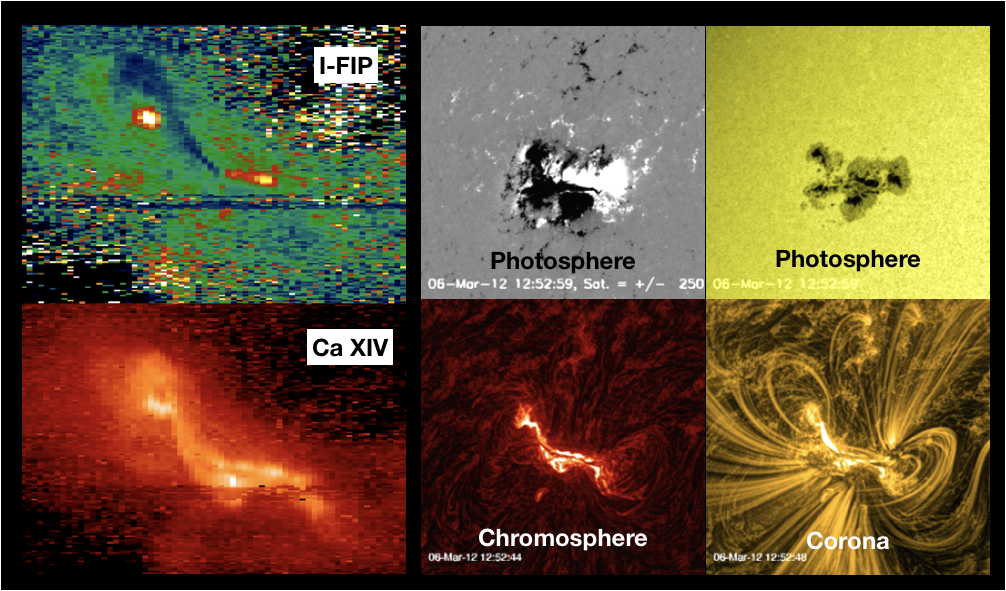
Element abundance signatures have long been used as tracers of physical processes throughout as- trophysics. Understanding the spatial and temporal variations in the composition of the solar corona provides insight into how matter and energy flow from the solar chromosphere out into the heliosphere as well as from the chromospheres of solar-type stars into their astrospheres. Solar and stellar observations show variations of abundances between their photospheres and coronae which are not related to the mass or charge state of the element, but rather depends on the first ionization potential (FIP). In particular, high-FIP elements (i.e., FIP >10 eV) maintain their photospheric abundances in the corona, whereas low-FIP elements can have enhanced abundances. This is the well-known FIP effect. Conversely, the inverse FIP (I-FIP) effect refers to the relative enhancement of high-FIP or relative depletion low-FIP elements in solar and stellar coronae. The fractionation of the plasma takes place in the chromosphere where low-FIP elements are mainly ionized and high-FIP elements remain neutral.
One model that is capable of accounting for both the FIP and I-FIP effect is the ponderomotive force fractionation (PF) model (Laming 2015). The ponderomotive force acts only on the already ionized low-FIP elements separating ions from neutrals. Fractionation is the result of absoprbtion of waves, and it depends on the details of wave propagation as they interact with the high density gradient of the chromosphere. According to the Laming model, the absorption of resonant Alfvèn waves (a particular kind of plasma wave inducing magnetic perturbations) originating in the corona can produce an upward PF making low-FIP elements over-abundant in the corona, thereby producing the FIP-effect. Mode converted fast waves and/or torsional Alfvèn waves from below the chromosphere can produce a downward PF so that low-FIP elements are under-abundant in the corona (i.e. the I-FIP effect).

Figure 1: Hinode/EIS and SDO/AIA and HMI images of AR 11429 on March 6, 2012. Left: Ar XIV/Ca XIV intensity ratio map (top) and Ca xiv intensity map (bottom). Yellow regions of I-FIP plasma are located in flare loop footpoints above umbrae of coalescing umbrae. Right: Corresponding SDO/HMI line of sight magnetogram and continuum images and SDO/AIA 304 Å and 171 Å images.
Recently, I-FIP plasma was discovered for the first time on the Sun in the FIP-effect dominated corona (Doschek, Warren & Feldman 2015). Small regions of I-FIP effect plasma were observed by Hinode/EIS in flare loop footpoints over coalescing sunspot umbrae in highly complex, emerging flux regions such as AR 11429 (Figure 1). Baker et al. (2019) proposed that waves generated by sub-chromospheric reconnection create the I-FIP plasma. Such a scenario, which would confirm the PF mechanism invoked by (Laming 2015), requires high-cadence and high-resolution spectropolarimetric multi-line observations to be verified. The simultaneous multi-wavelength polarimetric observations taken by the instruments of DKIST and EST at different heights in the solar atmosphere and at high spatial and temporal resolution will enable us to probe the wave physics of plasma fractionation in the chromosphere in an unprecedent way. The insight gained in our understanding of the processes in creating I-FIP plasma on the Sun goes beyond solar physics, as it will in turn inform us about M-type stars that have I-FIP-effect dominated coronae.
The link to the paper is here:
Transient Inverse FIP Plasma Composition Evolution in a Solar Flare
References
Baker et al. 2019, ApJ, 875, 35
Laming 2015, LRSP, 12, 2
Doschek, Warren & Feldman 2015, ApJ, 808, L7B


